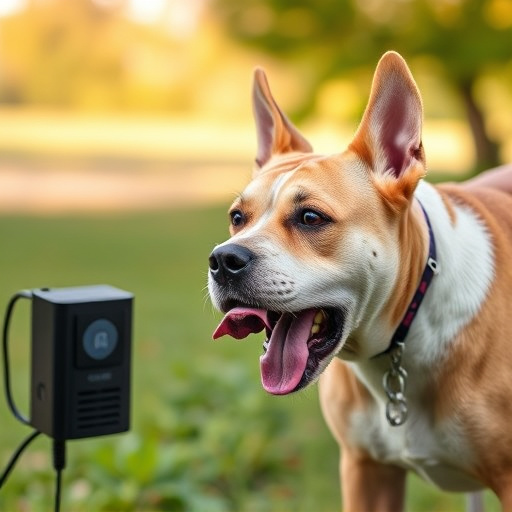Animal control sonic repel systems use sound waves to safely deter dogs from specific areas, offering an eco-friendly alternative to traditional repellents. These battery-powered devices emit high-frequency signals unpleasant or painful to dogs, encouraging them to stay away. With runtime specs ranging from 8 to 12 hours on a single charge, these systems provide prolonged protection against unwanted animal intrusions for residential, commercial, and agricultural use. Implementing sonic repellents offers humane, non-lethal deterrence for dogs, cats, and rodents in urban settings, with flexible placement and optimal performance tailored to specific targets.
“Discover an innovative solution to animal control with our in-depth look at battery-operated sonic repellent systems. These devices offer a non-lethal approach to keeping pets, especially dogs, away from unwanted areas. In this article, we explore the science behind these repellents and delve into the technical aspects of battery-operated models, focusing on their runtime specs. From understanding how they work to weighing the benefits and considerations, you’ll find everything you need to know about implementing a sonic repellent system effectively.”
- Understanding Animal Control Sonic Repellents: How They Work
- Battery Operated Dog Deterrent: A Detailed Look at Runtime Specs
- Benefits and Considerations for Implementing a Sonic Repellent System
Understanding Animal Control Sonic Repellents: How They Work
Animal control sonic repel systems utilize sound waves to deter and repel animals, particularly dogs, from specific areas. These devices are designed to emit high-frequency auditory signals that are unpleasant or even painful to animals, encouraging them to stay away. Unlike traditional repellents that rely on spray or scent, sonic repel systems offer a non-toxic and environmentally friendly alternative.
The devices are typically battery operated, featuring adjustable settings for customization based on the target animal’s sensitivity to sound. Key runtime specs vary depending on the model but often provide hours of continuous operation on a single charge. This longevity ensures consistent protection against unwanted animal intrusions, making them ideal for residential, commercial, and agricultural settings.
Battery Operated Dog Deterrent: A Detailed Look at Runtime Specs
The battery-operated dog deterrent systems have gained popularity for their effective yet humane way of keeping canines at bay. When it comes to understanding the runtime specs, these devices offer a range of operation from 8 to 12 hours on a single charge, depending on the model and usage intensity. This long operational duration is a significant advantage as it eliminates the need for frequent recharging, making them ideal for outdoor use where consistent protection is required.
The runtime efficiency is achieved through advanced energy-saving technology integrated into these devices. They typically utilize small yet powerful batteries that can withstand harsh weather conditions, ensuring uninterrupted service throughout the day and night. Moreover, some models feature automatic power-saving modes that activate when motion or sound triggers are not detected, further extending the battery life during periods of inactivity.
Benefits and Considerations for Implementing a Sonic Repellent System
Implementing a sonic repellent system offers several benefits for managing and controlling animal behavior, especially in urban settings where human-animal conflicts are common. These devices emit high-frequency sound waves that are safe for humans but effectively deter animals like dogs, cats, and even rodents. One of the key advantages is their non-lethal nature, making them a humane alternative to traditional trapping or poisoning methods. Additionally, sonic repellents can be battery-operated, providing flexibility in placement and reducing the need for constant supervision. This feature ensures prolonged runtime specs, allowing for efficient protection over larger areas without the hassle of frequent replacements.
However, considerations should be made before adopting this technology. The effectiveness of sonic repellents can vary based on environmental factors such as temperature, wind, and terrain, which may impact the range and intensity of sound waves. Moreover, not all animals are equally sensitive to these sounds, so individual results may differ. It’s essential to choose devices designed for specific animal targets to ensure optimal performance. Despite these nuances, sonic repellent systems present a promising solution for communities aiming to humanely manage animal populations, especially in combination with other control strategies.
Animal control sonic repellent systems, particularly battery-operated dog deterrents, offer an innovative solution for managing unwanted animal intruders. By understanding how these devices work and considering their benefits, homeowners can make informed decisions about implementing a sonic repellent system. The detailed analysis of the battery operated dog deterrent’s runtime specs highlights the device’s efficiency and reliability, making it a viable option for effective and long-lasting animal control.
